2~3세 유아들의 성장 발육, Growth and development of 2~3-year-old toddlers
2~3세 유아들의 성장
표 3-27. 만 2세 한국 유아들의 체중과 신장의 백분위수
|
백분위 수
성별 |
3 | 10 | 25 | 50 | 75 | 90 | 97 | |
| 남아 | 체중(kg) | 9.00 | 10.10 | 10.97 | 11.70 | 12.70 | 13.90 | 15.00 |
| 남아신장(cm) | 75.6 | 80.0 | 83.0 | 85.4 | 88.0 | 91.0 | 94.8 | |
| 여아 | 체중(kg) | 8.50 | 9.45 | 10.50 | 11.50 | 12.50 | 13.5 | 14.60 |
| 여아신장(cm) | 75,0 | 79.5 | 82.0 | 84.6 | 87.2 | 90.0 | 93.4 |
표 3-27. 만 2세 6개월 한국 유아들의 체중과 신장의 백분위수
|
백분위 수
성별 |
3 | 10 | 25 | 50 | 75 | 90 | 97 | |
| 남아 | 체중(kg) | 9.50 | 10.50 | 11.50 | 12.50 | 13.50 | 14.50 | 15.80 |
| 남아신장(cm) | 77.5 | 81.5 | 85.0 | 88.5 | 92.0 | 94.5 | 98.00 | |
| 여아 | 체중(kg) | 9.00 | 10.0 | 11.10 | 12.00 | 13.10 | 13.80 | 14.75 |
| 여아신장(cm) | 75.0 | 80.00 | 84.0 | 87.5 | 90.8 | 94.0 | 96.4 |
그림 3-147. 생후 0~36개월 된 한국 남 신생아들과 남 영유아들의 성장차트와 백분위수.
Copyright ⓒ 2012 John Sangwon Lee, MD., FAAP
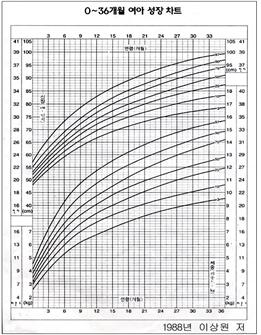
그림 3-148. 생후 0~36개월 된 한국 여 신생아들과 여 영유아들의 성장차트와 백분위수.
Copyright ⓒ 2012 John Sangwon Lee, MD., FAAP
출처 및 참조문헌
① 예방접종표 .
② 장난감
③ 이런 경우는 영유아 발육지연을 의심해본다
④ 자녀 사랑
⑤ 소아청소년 예측 체중 신장 치과 소아청소년 예측 체중신장 계산공식
- 유아의 체중과 신장을 잰 다음 그 체중 치와 신장 치를 성장차트 백분위선에 그려 넣는다.
- 성장차트 체중·신장 백분위선 상 어디에 있는지 알아본다.
- 체중과 신장이 이전 성장차트 체중·신장 백분위선을 따라 이전과 거의 같은 성장 속도로 계속 증가되면서 정상적으로 잘 자라나 알아본다.
| 만 2세 유아들의 발육 |
- 한국에 ‘미운 세살’이란 말이 있다.
- 또 ‘세살 버릇 여든 간다.’라는 말이 있다.
- 미국 말에 ‘Terrible two years’ 란 말이 있다.
- 즉 두 살 먹은 유아가 지니었던 성격의 대부분은 일생동안 계속 지니고 산다는 것을 의미하는 것 같다.
- 한국 나이 3세는 미국 나이로 만 2세에 해당된다.
- 일반적으로 만 두 살 된 유아를 키울 때 어려운 점이 많다.
- 그들은 때로는 개구쟁이 같이 행동하고, 때로는 고집불통이다.
- 그들의 개성이 이때부터 좀 더 뚜렷하게 나타난다.
- 만 2세가 된 유아들의 대부분은 그들 자신이 하고 싶은 대로 해야 직성이 풀릴 수 있다.
- 로스 캠벨박사는 75 퍼센타일 개성을 소유한 아이들과 25 퍼센타일 개성을 소유한 아이들로 구분한다.
- 75 퍼센타일 개성의 소유한 아이들은 반 권위적인 개성을 소유한 아이들이고 권위자들에 반항하는 개성을 지니고 있다.
- 25 퍼센타일 개성을 소유하는 아이들도 자기네들의 의견을 내세우기도 하지만 권위자들에게 순종하는 개성을 지닌 아이들이다.
- 이 두 개성은 다 정상적이다.
- 두 개성에 장단점이 있다.
- 아이들의 개성에 따라 키우면 좋을 것이다.
- 로스 캠벨박사에 의하면 타고난 개성에 따라, 키우기 어려운 아이들도 있고 키우기가 쉬운 아이들도 있다고 한다.
- 이전보다 1일 총 수면시간이 점점 더 줄어들고 낮잠을 덜 자고 (부모도 반의사가 되어야 한다. -소아가정간호백과-제 22권 아들 딸 이렇게 사랑해 키우세요-잠 참조) 부모들이 바라는 만큼 잘 자지도 않고, 잘 먹지도 않는 유아들이 많다.
- 그 때문에 2살 된 유아 자녀를 둔 부모들은 그 자녀의 신체 어디에 이상이 있어 잘 먹지 않는 줄 알고 걱정한다.
- 이 나이 유아들은 부모가 무엇을 시키면 무조건 ‘싫어’, 또는 “N0″라고 대답한다.
- 그래서 미국에서는 2세 유아들을 “No“ Age Children”이라고도 한다.
- 만 2~3세가 될 때까지 대개 2~3kg 정도 체중이 증가된다.
- 이런 사실로 1세 이전의 체중 증가 속도에 비하면 아주 느린 것을 알 수 있다.
- 그렇지만 대부분의 유아들의 체중과 신장은 각 유아의 성장차트 체중·신장 백분위선을 따라 계속 늘어간다.
- 만 2세 유아들의 신장 치는 그 아이가 성인이 되었을 때의 신장 치의 거의 반이 된다.
- 2세까지 거의 모든 젖니가 다 나는 것이 보통이다.
| 소아 나이에 따른 1일 총 수면시간 |
- 태아들, 신생아들, 0~6개월 영아들의 정상 수면 패턴
- 신생아들, 영아들, 유아들의 정상 수면 패턴
- 렘수면과 비 렘수면
- 아이들의 정상 수면 패턴, 수면 문제와 그 해결 방법
- 영아들이나 유아들의 정상 낮잠 패턴, 1회 낮잠 자는 시간, 1일 낮잠 자는 횟수
- 신생아기, 영아기, 유아기, 학령기, 사춘기의 아이들의 수면 시간과 낮잠 자는 시간 참조
부모도 반의사가 되어야 한다-소아가정간호백과]-제 22권 아들 딸 이렇게 사랑해 키우세요 참조
1. 만 2세 유아들의 신체 발육
- 이 연령층의 유아들의 일부는 무릎을 약간 굽히고 두 어깨를 앞으로 약간 움츠리고 팔을 뒤로 조금 젖히고 걸을 수 있다.
- 이 시기의 대부분의 유아들은 앞으로 달려갈 수 있다.
- 이전보다 계단을 더 빨리 걸어 올라가고 내려갈 수 있고,
- 공을 발로 힘세게 앞으로 찰 수 있다.
- 만 3세 유아들의 대부분은 세 발 자전거를 잘 탈 수 있다.

사진 3-149. 2년 6개월 된 유아들의 50%는 세 발 자전거 발판을 디디고 탈 수 있다.
Copyright ⓒ 2012 John Sangwon Lee, MD., FAAP

사진 3-150. 2년 6개월에서 3년 6개월까지 유아들의 대부분은 부모의 도움으로 옷을 제대로 입을 수 있다.
Copyright ⓒ 2012 John Sangwon Lee, MD., FAAP

사진 3-151. 2년 6개월 된 유아들의 75%는 자신이 물로 손을 씻고 수건으로 물기를 닦을 수 있다.
Copyright ⓒ 2012 John Sangwon Lee, MD., FAAP

사진 3-152. 2년 6개월 된 유아들의 75%가 자신이 물로 손을 씻고 수건으로 물기를 닦을 수 있다.
Copyright ⓒ 2012 John Sangwon Lee, MD., FAAP
2. 만 2세 유아들의 손 발육
- 2세 된 유아들의 대부분은 문손잡이를 돌려 문을 열 수 있고
- 동그라미를 보고 종이에 동그라미를 그릴 수 있다.
- 장난감이나 집안 물건 등을 부수거나 분리하고 다시 복구하려고 애쓰기도 한다.
- 책장을 한 장씩 넘길 수 있고
- 구슬을 실로 꿸 수 있다.
- 손을 전 보다도 더 잘 놀릴 수 있다.
- 큰 상자 속에 작은 상자를 집어넣을 수 있고
- 장난감 정육면체 블록 여덟 개를 차곡차곡 위아래로 쌓아 탑을 만들 수 있다.
- 네 개를 옆으로 차곡차곡 겹쳐 기차 모형을 만들 수 있다.
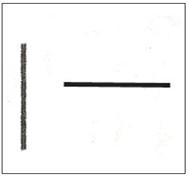
그림 3-153. 2세 된 유아들의 일부는 수직선과 수평선을 분별할 수 있다.
Copyright ⓒ 2012 John Sangwon Lee, MD ., FAAP
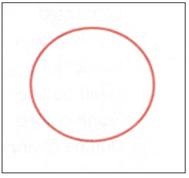
그림 3-154. 2년 6개월에서 3년 6개월 된 유아들의 일부는 o를 보고 그릴 수 있다.
Copyright ⓒ 2012 John Sangwon Lee, MD., FAAP
그림 3-155. 생후 21~35개월 된 유아들의 일부는 장난감 정육면체 블록 여덟 개를 차곡차곡 쌓아 탑을 만들 수 있다.
Copyright ⓒ 2012 John Sangwon Lee, MD., FAAP
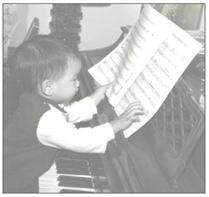
사진 3-156. 2~3세 된 유아들은 책장을 넘길 수 있다.
Copyright ⓒ 2012 John Sangwon Lee, MD., FAAP
3. 만 2세 유아들의 언어 발육
- 2년 6개월이 된 유아들의 일부는 약 4백 개 정도의 단어를 이용해서 말을 할 수 있다.
- 주어와 동사를 어느 정도 구분해서 말할 수 있다.
- 물건의 이름을 기억한 후 다음 그 물건 이름을 써서 그 물건을 부르기도 한다.
- 이야기를 만들어서 자기 자신에게 말하기도 하고 그 한 말을 반복하기도 한다.
- 이와 같이 언어 발달이 상당히 빠른 시기이다.
- 그래서인지 이 나이의 유아들에게 생리적 말더듬이 더러 생길 수 있다.
- 이런 생리적 말더듬은 만 3세가 지난 이후 1~2년 동안 계속되다가 말더듬을 더 이상 하지 않는 것이 보통이다.
4. 만 2세 유아들의 사회성 발육
- 이 연령층의 대부분의 유아들은 자기 혼자서 잠자기를 아주 싫어한다.
- 그래서 여러 가지 구실을 붙여 엄마 아빠와 같이 한 침실에서 자기를 원한다.
- 자아의식이 싹트기 시작하는 나이이다.
- 무엇을 하라고 시키면 아직도 ‘아니야’ 또는’ 싫어’ 란 말을 많이 한다.
- 이 시기의 유아들은 너무 많은 것을 짧은 시간 내에 배우려고 한다.
- 그렇지만 이 시기의 유아들에게는 그렇게 많은 새로운 것을 한꺼번에 많이 배우는 데는 매우 벅차다.
- 엄마나 아빠가 하는 간단한 일을 도우면서 새로운 것을 배우려고 애쓴다.
- 때로는 짜증내기도 한다. “생후 1개월~6세의 영유아들의 발육 이정표” 참조.
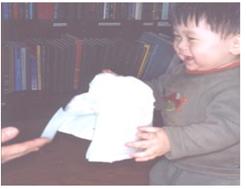
사진 3-157. 2~3세 된 유아들은 간단한 심부름을 할 수 있다.
Copyright ⓒ 2012 John Sangwon Lee, MD., FAAP
| 2~3세 유아들의 영양 |
- 이 시기의 대부분의 유아들의 체중과 신장의 성장 속도가 정상적으로 느리기 때문에 그에 따라 음식물을 충분히 섭취하지 않는 것 같다.
- 그렇지만 하루에 주식을 세 번, 주식과 주식 사이에 간식을 두 번 정도 준다.
- 유아들의 음식물 섭취 패턴에 따라 간식을 하루에 1~3번 주어도 된다.
- 균형 잡힌 음식물을 골고루 잘 먹는 유아들에게는 비타민제나 철분제를 가외로 따로 줄 필요가 없다.
| 2~3세 유아들의 양호 |
- 육체적으로 정신적으로 사회적으로 매우 활동적이다.
- 아직 미숙해서 사리 판단을 제대로 할 수 없는 어린 나이이다.
- 이런 이유로 이 나이 유아들에게 안전사고가 잘 생길 수 있다.
- 추락, 화상, 교통, 질식, 익사, 약물중독, 독극물중독, 화학물질 중독 등으로 안전사고가 이 시기 유아들에게 나기 쉽다.
- 이런 안전사고가 생기지 않게 각별히 주의하고 예방에 힘써야 한다.
- 2세가 될 때까지 4차 DTaP 백신 예방접종을, 3~4차 불활성 소아마비 백신 예방접종을, 1차 홍역, 풍진, 볼거리 백신 예방접종을, 3~4차 히브 백신 예방접종, 1차 BCG 백신 예방접종을, 3차 B형 간염 백신 예방접종을, 2차 또는 3차 로타바이러스 감염 백신 예방접종을. 4차 폐렴 백신 예방 접종(PCV), 2차 A형 간염 백신 예방 접종, 1차 수두 백신 예방접종을 받았으면 4세가 될 때까지 기본으로 더 받아야할 예방접종은 다 마친 셈이다.
- 인플루엔자 백신 예방접종은 생후 6개월부터 매해 마다 접종받는다.
- ProQuad 종합 백신이나 Pediarix 종합백신으로 예방접종을 받을 수 있다.
- 나라에 따라, 백신접종의 종류, 예방 접종 방법이 다를 수 있다.
- 단골 의사의 지시에 따라 예방접종을 제 때에 해준다.
- 특수 지방이나 나라에서 유행하는 감염병을 예방하기 위해 해주는 예방접종이나 어떤 특수 감염병이 유행될 때 그 감염병을 예방하기 위해서 하는 예방접종은 단골 소아청소년과 의사나 각 보건당국의 권장에 따라 예방접종을 해주도록 한다(p.000, 표2-11 예방접종표-1 참조).
- 결핵을 진단하기 위해서 투베르쿨린 결핵 피부 반응 검사를 6~12개월마다 받는 것도 좋다.
- 빈혈과 납중독이 있나 알아보기 위해 혈액검사도 필요에 따라 해 준다.
- 때에 따라 대소변 검사도 한다.
- “Menhibrix 백신(2012년 6월)-미 FDA Neisseria meningitidis 혈청형 C, Y와 Haemophilus influenzae type b (Hib) 로 생기는 패혈증과 뇌수막염을 예방 할 수 있는 종합 백신이다. 생후 2, 4, 6개월과 12 ~15 개월에 총 4화 접종받을 수 있고 최초 접종은 생후 6주에 접종 받을 수 있다. 출처 Physician’s First Watch for June 15, 2012
| 2~3세 유아들의 장난감 |
장난감 참조
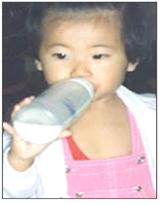
사진 3-158. 이 시기의 유아들에게 음식물을 우유병에 넣어 먹여서는 안 된다. 아무 때나 음식물을 우유병에 넣어 빨아먹게 방치 하면 충치가 생기기 쉽다.
Copyright ⓒ 2012 John Sangwon Lee, MD., FAAP
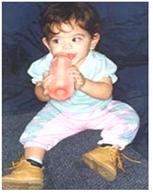
사진 3-159. 이 시기의 유아들에게 음식물을 우유병에 넣어 빨아 먹여서는 안 된다. 아무 때나 음식물을 우유
병에 넣어 빨아먹으면 충치가 생기기 쉽다.
Copyright ⓒ 2012 John Sangwon Lee, MD., FAAP
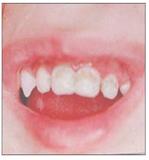
사진 3-160. 우유병을 밤낮 가리지 않고 빨아서 생긴 위 앞 중앙 젖니에 생긴 충치.
Copyright ⓒ 2012 John Sangwon Lee, MD., FAAP
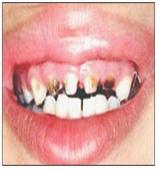
사진 3-161. 우유병을 밤낮 가리지 않고 빨아서 생긴 위 앞 중앙 앞니와 옆니에 생긴 충치.
Copyright ⓒ 2012 John Sangwon Lee, MD., FAAP
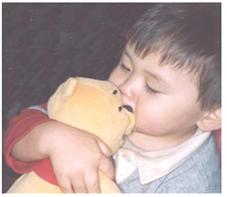
사진 3-162. 장난감 곰 대상 물체를 가지고 잠자기를 좋아하는 유아들도 있다. 이런 장난감 곰을 일시적 대상 물체라고도 한다. 그들은 항상 부모의 눈길 접촉사랑, 신체적 접촉사랑 그리고 집중적 사랑과 보살핌을 조건 없이 충분히 받아야 한다.
Copyright ⓒ 2012 John Sangwon Lee, MD., FAAP

사진 3-163. 일시적 대상 장난감 곰을 가지고 다니기를 좋아하는 유아들도 있다. 그들은 항상 부모의 눈길 접촉사랑, 신체적 접촉사랑 그리고 집중적 관심, 사랑과 보살핌을 조건 없이 충분히 받아야 한다.
Copyright ⓒ 2012 John Sangwon Lee, MD/, FAAP

사진 3-164. 조건 없는 진정한 사랑을 충분히 받고 자란 아이들은 자기를 사랑하고 남을 사랑하고 건전한 자부심을 갖는다.
Copyright ⓒ 2012 John Sangwon Lee, MD., FAAP
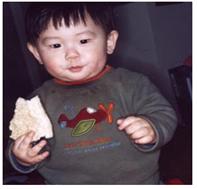
사진 3-165. 조건 없는 진정한 사랑을 충분히 받고 자란 아이들은 자기를 사랑하고 남을 사랑하고 애완동물도 사랑할 줄 안다.
Copyright ⓒ 2012 John Sangwon Lee, MD., FAAP
|
다음은“ 야단치면 오줌을 쌉니다–궁금합니다, 대소변 가리기 훈련 ”에 관한 인터넷 소아청소년 건강상담 질의응답의 예 입니다. |
Q&A. 야단치면 오줌을 쌉니다–궁금합니다
Q.
안녕하세요. 저는 25개월 된 남자아이의 엄마입니다.
아이가 심하게 야단을 맞거나 심하게 울고 하면 오줌을 싸곤 합니다.
크게 심각하게 생각하지 않았는데 주변의 엄마가 정서적으로 좀 문제가 있는 게 아니냐며 말하더군요. 그래서 걱정이 되어서 이렇게 문의합니다. 좋은 말씀가다리겠습니다.
A.
원이님
안녕하세요. 질문해 주셔서 감사합니다. 좋은 질문입니다.
자녀의 나이, 성별, 과거 병력, 가족 병력, 진찰소견, 임상검사 등의 정보를 많이 알수록 답변을 드리는데 도움이 됩니다. 주신 정보를 토대로 해서 답변을 드리겠습니다.

사진 3-162. 장난감 곰 대상 물체를 가지고 잠자기를 좋아하는 유아들도 있다. 이런 장난감 곰을 일시적 대상 물체라고도 한다. 그들은 항상 부모의 눈길 접촉사랑, 신체적 접촉사랑 그리고 집중적 사랑과 보살핌을 조건 없이 충분히 받아야 한다.
Copyright ⓒ 2012 John Sangwon Lee, MD., FAAP

사진 3-163. 일시적 대상 장난감 곰을 가지고 다니기를 좋아하는 유아들도 있다. 그들은 항상 부모의 눈길 접촉사랑, 신체적 접촉사랑 그리고 집중적 관심, 사랑과 보살핌을 조건 없이 충분히 받아야 한다.
Copyright ⓒ 2012 John Sangwon Lee, MD., FAAP
“심하게 야단을 맞는다.”는 말씀은 좀 더 구체적으로 말씀해 주셔야 답변을 드릴 수 있습니다.
야단을 칠 때 큰 소리로 자녀에게 비난하시는지,
자녀에게 사랑스러운 눈길을 주면서 야단을 치는지,
야단을 칠 때 그 자녀가 잘못한 점에 초점을 맞추고 그 잘못한 점을 논리적으로 자녀의 연령에 맞게 합리적으로 말씀을 하셨는지,
또는 매로 체벌을 주는지,
야단을 치고 난 후 얼마동안 그 자녀 혼자 있게 하고 있는지,
그 자녀의 연령에 맞게 말씀을 하셨는지 등등을 알아야 답변을 드리는데 좋을 텐데요.
또 평소에 눈길 접촉 사랑으로 신체적 접촉사랑을 충분히 해주시는지요.
그리고 조건 없는 사랑을 진정으로 많이 해서 그 자녀가 가지고 있는 사랑 탱크를 철철 넘치도록 채워 주셨는지.
그 자녀의 나이에 적절하게 이렇게 해 달라고 먼저 간청을 하셨는지,
그 간청을 안 들었을 때에 그 간청이 그 자녀의 나이에 부적절한지,
배가 고픈지, 어디가 아픈지, 엄마 아빠가 경제적으로 정신적으로 영적으로 육체적으로 안정되어 있는지 등등을 알아보시기 바랍니다.
이 나이에 대소변 가리는 훈련을 거의 완전하게 받아도 정상적으로 대소변을 가릴 수 없는 유아들이 많이 있습니다.
그래서 가끔 대소변을 쌀 수 있습니다.
부모가 이렇게 해달라고 요청하는 것을 자기가 어리기 때문에 들어줄 수 없을 때 그 유아 자신이 얼마나 마음이 아프겠습니까.
혹시나 비뇨기계에 어떤 이상이 있는지 요로감염이 있는지 소아청소년과에서 확인을 해 주세요.
[부모도 반의사가 되어야 한다–소아가정간호백과]-제3권 신생아, 영유아, 학령기와 사춘기 아이들의 성장발육–해당 연령의 성장 발육, 생후 1개월~6세 아이들의 발육 이정표. 감사합니다. 이상원 드림
Growth and development of 2-3 year old toddlers
Growth of 2-3-year-old toddlers
Table 3-27. Percentiles of weight and height for 2-year-old Korean infants percentile
표 3-27. 만 2세 한국 유아들의 체중과 신장의 백분위수
|
percentile
Gender |
3 | 10 | 25 | 50 | 75 | 90 | 97 | |
| boy | weight(kg) | 9.00 | 10.10 | 10.97 | 11.70 | 12.70 | 13.90 | 15.00 |
| height(cm) | 75.6 | 80.0 | 83.0 | 85.4 | 88.0 | 91.0 | 94.8 | |
| girl | weight(kg) | 8.50 | 9.45 | 10.50 | 11.50 | 12.50 | 13.5 | 14.60 |
| height(cm) | 75,0 | 79.5 | 82.0 | 84.6 | 87.2 | 90.0 | 93.4 |
Table 3-27. Percentiles of weight and height of Korean infants aged 2 years and 6 months 표 3-27. 만 2세 6개월 한국 유아들의 체중과 신장의 백분위수
|
percentile
Gender |
3 | 10 | 25 | 50 | 75 | 90 | 97 | |
| boy | weight(kg) | 9.50 | 10.50 | 11.50 | 12.50 | 13.50 | 14.50 | 15.80 |
| height(cm) | 77.5 | 81.5 | 85.0 | 88.5 | 92.0 | 94.5 | 98.00 | |
| girl | weight(kg) | 9.00 | 10.0 | 11.10 | 12.00 | 13.10 | 13.80 | 14.75 |
| height(cm) | 75.0 | 80.00 | 84.0 | 87.5 | 90.8 | 94.0 | 96.4 |
Figure 3-147. Growth charts and percentiles of Korean male newborns, male infants, male toddlers aged 0 to 36 months of age. Copyright ⓒ 2012 John Sangwon Lee, MD., FAAP

Figure 3-148. Growth charts and percentiles of Korean female newborns, female infants, and female ioddlers aged 0 to 36 months of age. Copyright ⓒ 2012 John Sangwon Lee, MD., FAAP
Sources and References
① Vaccination table.
② Toys
③ In this case, we suspect the developmental delay in infants and young children.
④ love for children
⑤ Predicted weight and height for children and adolescents
predictions for weight and height calculation formula
• Measure the infant’s weight and height, and then draw the weight and height values on the growth chart percentiles.
• Find out where you are on the weight and height percentiles of the growth chart.
• Check if your weight and height are growing normally as they continue to increase at the same growth rate as before along the weight and height percentiles of the previous growth chart.
Development of 2-year-old toddlers
• There is a saying in Korea of ’the ugly three-year-old’.
• There is another saying, ‘The habit of three years old goes to eighty.’
• There is an American saying ‘Terrible two years’.
• This seems to mean that most of the personality traits a two-year-old child possessed will last a lifetime.
• A 3-year-old in Korea is equivalent to a 2-year-old in the US.
• In general, there are many challenges when raising a two-year-old child.
• They sometimes behave like naughty people, and sometimes they are stubborn.
• Their individuality becomes more distinct from this point on.
• Most of the two-year-olds are free to do what they want to do.
• Dr. Ross Campbell distinguishes between children with a 75 percent personality and children with a 25 percent personality.
• Children with 75 percentile personality traits are children with anti-authoritarian personalities and have personalities that rebel against authority figures.
• Children with 25th percentile personalities are also children with personalities who are obedient to authority figures, although they also have their own opinions.
• Both of these personalities are normal.
• Both personalities have their strengths and weaknesses.
• It would be good to raise children according to their personalities.
• According to Dr. Ross Campbell, some children are difficult to raise and others are easy to raise, depending on their innate personality.
• Sleeping less and taking fewer naps a day than before There are many children who do not eat well.
• As a result, parents of two-year-old infants are worried that something is wrong with their child’s body and that they are not eating well.
• Toddlers at this age answer ‘No’ or ‘N0′ when their parents tell them to do something.
• That’s why two-year-olds are sometimes referred to as “No“ Age Children” in the United States.
• By the time children reach 2 or 3 years of age, they usually gain about 2 to 3 kg in weight.
• This fact indicates that the weight gain is very slow compared to the rate of weight gain before the age of 1 year.
• However, most toddlers’ weight and height continue to increase along with the weight and height percentiles of each infant’s growth chart.
• A two-year-old child’s height is almost half that of the child as an adult.
• By the age of two, it is normal for almost all of the milk teeth to appear.
Total sleep time per day according to children’s age
• Normal sleep patterns in fetuses, newborns, and infants 0-6 months
• Normal sleep patterns in newborns, infants, and toddlers
• REM and non-REM sleep
• Normal sleep patterns in children, sleep problems and solutions
• Normal nap patterns, number of naps per nap, and number of naps per day in infants and toddlers
• See Sleep and Nap Times for Newborns, Infants, Infants, School-Ages, and Adolescents.
www.drleepediatrics.com – Refer to Volume 22, Raising Sons and Daughters with Love 1.
Physical development of 2-year-old toddlers
• Some children in this age group can walk with slightly bent knees, slightly forward shoulders, and slightly back arms.
• Most children at this age can run forward.
• can walk up and down stairs faster than before;
• Toddlers can kick the ball hard with their feet.
• Most 3-year-olds can ride tricycles well.

Picture 3-149. 50% of children aged 2 years and 6 months can ride on a tricycle footrest. Copyright ⓒ 2012 John Sangwon Lee, MD., FAAP

Picture 3-150. Most infants from 2 years and 6 months to 3 years and 6 months can dress properly with the help of their parents. Copyright ⓒ 2012 John Sangwon Lee, MD., FAAP

Picture 3-151. 75% of 2-year and 6-month-old infants can wash their hands with water and dry with a towel. Copyright ⓒ 2012 John Sangwon Lee, MD., FAAP

Picture 3-152. 75% of 2-year and 6-month-old toddlers can wash their hands with water and dry with a towel. Copyright ⓒ 2012 John Sangwon Lee, MD., FAAP
2. Hand development of 2-year-old toddlers
• Most 2-year-olds can open the door by turning the doorknob.
• Can see circles and draw circles on the paper.
• Toddlers may try to break, separate, and restore toys, household items, etc.
• Toddlers can turn the bookshelf one by one
• Beads can be threaded.
•Toddlers can play with my hands better than before.
• Toddlers can put a small box inside a large box and
• Toddlers can build a tower by stacking eight toy cube blocks on top of each other.
• Toddlers can make a training model by stacking four of them side by side.

Figure 3-153. Some 2-year-olds can discern vertical and horizontal lines. Copyright ⓒ 2012 John Sangwon Lee, MD ., FAAP

Figure 3-154. Some children aged 2 years and 6 months to 3 years and 6 months can see and draw O. Copyright ⓒ 2012 John Sangwon Lee, MD., FAAP
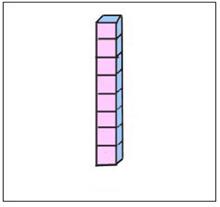
Figure 3-155. Some children aged 21-35 months can build a tower by stacking eight toy cube blocks one after another. Copyright ⓒ 2012 John Sangwon Lee, MD., FAAP

Picture 3-156. Toddlers 2 to 3 years old can flip through bookshelves. Copyright ⓒ 2012 John Sangwon Lee, MD., FAAP
3. Language development of 2-year-old toddlers
• Some children aged 2 years and 6 months can speak using about 400 words.
• Able to distinguish between subject and verb to some extent.
• After remembering the name of an object, they call the object by writing the name of the next object.
• Make up a story and tell it to yourself or repeat it.
• This is a period in which language development is quite rapid.
• For this reason, physiological stuttering may occur more frequently in infants at this age.
• It is common for this physiological stuttering to continue for 1 to 2 years after the age of 3, and then stop stuttering.
4. Social development of 2-year-old toddlers
• Most children in this age group hate sleeping alone.
• So, with various excuses, they want to sleep in the same bedroom with Mom and Dad.
• This is the age at which self-awareness begins to sprout.
• When asked to do something, they still say ‘no’ or ‘no’ a lot.
• Toddlers at this age try to learn too much in a short amount of time.
• However, for young children at this age, it is very difficult to learn so many new things at once.
• Trying to learn new things while helping mom or dad do simple things.
• Sometimes irritable. See “Developmental Milestones for Infants 1 Month to 6 Years Old”.

Picture 3-157. Toddlers aged 2-3 years can do simple errands. Copyright ⓒ 2012 John Sangwon Lee, MD., FAAP
Nutrition for 2-3-year-old toddlers
• Most toddlers at this age do not seem to be getting enough food because their weight and height growth is normally slow.
• However, give stocks three times a day, and snacks between stocks twice a day.
• Snacks may be given 1-3 times a day depending on the infant’s food intake patterns.
• Toddlers who eat a well-balanced diet do not need to be given extra vitamins or iron supplements.
Good care and parentings for 2-3-year-old toddlers
• Very active physically, mentally, and socially.
• You are still young and unable to make good judgments.
• For this reason, children of this age are more likely to have accidents.
• Safety accidents such as falls, burns, traffic, suffocation, drowning, drug poisoning, poison poisoning, and chemical poisoning are easy to occur in infants at this age.
• Special attention should be paid to prevent such accidents from occurring, and efforts should be made to prevent such accidents.
• Make sure to bring the following immunization to update.
4th dose of DTaP vaccine,
4th dose of the inactivated polio vaccine,
1st dose of measles, rubella and mumps vaccine,
3rd or 4th dose of Hib vaccine,
1st BCG vaccine until 2 years of age Vaccination,
3rd hepatitis B vaccine,
2nd or 3rd rotavirus infection vaccine.
the 4th pneumococcal vaccine (PCV13),
the 2nd hepatitis A vaccine,
and the 1st chickenpox vaccine, toddlers have completed all the basic vaccinations they should receive at 4 years old.
• Influenza vaccine is given every year starting at 6 months of age.
• Toddlers can get vaccinated with the ProQuad Combination Vaccine, Vaxelis, or Pediarix Combination Vaccine.
• Depending on the country, the type of vaccination and the method of vaccination may differ.
• Vaccinations are given on time according to the instructions of a regular doctor.
• Vaccination given to prevent an infectious disease prevalent in a special region or country or to prevent an infectious disease when a special infectious disease is prevalent should be vaccinated according to the recommendation of a regular pediatrician or each health authority. (see Table 2-11 Vaccination Table-1).
• It is also a good idea to have a tuberculin tuberculosis skin test every 6 to 12 months to diagnose tuberculosis.
• Blood tests as needed to check for anemia and lead poisoning.
• Occasionally a stool test is also performed.
• “Menhibrix Vaccine (June 2012) – A combined vaccine that can prevent sepsis and meningitis caused by Neisseria meningitidis serotypes C and Y and Haemophilus influenzae type b (Hib) by the US FDA. A total of 4 doses can be given at 12-15 months of age, and the first dose can be given at 6 weeks of age Source Physician’s First Watch for June 15, 2012
Toys for 2-3-year-olds toddlers

Picture 3-158. Toddlers at this age should not be fed food from bottles.
If putting food in a milk bottle at any time and let it suck, it is easy to cause tooth decay. Copyright ⓒ 2012 John Sangwon Lee, MD., FAAP

Picture 3-159. Feeding infants at this age should not be sucked from the milk bottle at any time If sucking the milk bottle causes tooth decay. Copyright ⓒ 2012 John Sangwon Lee, MD., FAAP

Picture 3-160. Tooth decay in the center of the front is caused by sucking the milk bottle day and night. Copyright ⓒ 2012 John Sangwon Lee, MD., FAAP

Picture 3-161. Caries formed on the central front and side teeth in the front of the stomach caused by sucking the milk bottle day and night. Copyright ⓒ 2012 John Sangwon Lee, MD., FAAP

Picture 3-162. Some toddlers like to sleep with teddy bear objects. Such teddy bears are also called temporary objects. They should always receive their parents’ full, unconditional love and care for eye contact, physical contact, and intensive love and care. Copyright ⓒ 2012 John Sangwon Lee, MD., FAAP

Picture 3-163. Some toddlers like to carry a temporary object teddy bear. They should always receive the full, unconditional love and care of their parents for eye contact, physical contact and focused attention. Copyright ⓒ 2012 John Sangwon Lee, MD/, FAAP

Picture 3-164. Children who grow up fully receiving unconditional and true love themselves, love others, and have healthy self-esteem. Copyright ⓒ 2012 John Sangwon Lee, MD., FAAP

Picture 3-165. Children who grow up with enough unconditional and true love learn to love themselves, love others, and love their pets. Copyright ⓒ 2012 John Sangwon Lee, MD., FAAP
The following is an example of an Internet pediatric health consultation Q&A regarding “I pee when yelled at – I am curious, training to cover the toilet”.
Q&A.
I pee when scolded – I’m curious
Q. Good morning. I am the mother of a 25-month-old boy. When a child is severely scolded or cries a lot, he or she will pee. I didn’t take it too seriously, but the mothers around me told me that I might have some sort of emotional problem. So she is worried and asks: I look forward to hearing from you.
A.
Mr. Won Good morning.
Thanks for asking. That’s a good question. The more information you know about your child’s age, gender, past medical history, family history, examination findings, and clinical tests, the more helpful it is to give you an answer. We will give you an answer based on the information you provided.

Picture 3-162. Some toddlers like to sleep with teddy bear objects. Such teddy bears are also called temporary objects. They should always receive the full, unconditional love and care of their parents for eye contact, physical contact love, and intensive love and care. Copyright ⓒ 2012 John Sangwon Lee, MD., FAAP

Picture 3-163. Some toddlers like to carry a temporary object teddy bear. They should always receive the full, unconditional love and care of their parents for eye contact, physical contact and focused attention. Copyright ⓒ 2012 John Sangwon Lee, MD., FAAP
In order to give you an answer to the phrase “I am severely scolded”, you need to be more specific. Do you criticize your children in a loud voice when you scold? Are you scolding your children by giving them a loving gaze?
When scolding, focus on the child’s wrongdoing and logically explain the wrongdoing in a reasonable way for the child’s age; or corporal punishment with a rod, How long have you been leaving the child alone after being scolded? It would be good to know if you spoke according to the age of the child, etc, so that you can give an answer. Also, do you usually give enough physical contact love through eye contact love? And did you truly love unconditionally so much that you filled the love tank that your child had. Did you first plead for this to be done as appropriate for the child’s age?
When the petition is not heard, whether the petition is inappropriate for the age of the child, Find out if you are hungry, where you are sick, if your mom and dad are financially, mentally, spiritually, physically stable, etc. There are many infants at this age who are not able to toilet normally, even with almost complete toilet training.
So you may urinate occasionally. How heartbreaking it must be for the infant himself to be unable, because he is too young, to listen to his parents asking him to do this. Please check with the Pediatric clinic to see if there is any abnormality in the urinary system or if there is a urinary tract infection.www.drleepediatrics.com – Volume 3 Growth and Development of Newborns, Infants, School-age and Adolescent Children – Growth and development at the appropriate age, a milestone in the development of children aged 1 month to 6 years. Thank you. Lee Sang-won
출처 및 참조문헌
- Nelson Textbook of Pediatrics 22ND Ed
- The Harriet Lane Handbook 22ND Ed
- Growth and development of the children
- www.drleepediatrics.com 제1권 소아청소년 응급 의료
- www.drleepediatrics.com 제2권 소아청소년 예방
- www.drleepediatrics.com 제3권 소아청소년 성장 발육 육아
- www.drleepediatrics.com 제4권 모유,모유수유, 이유
- www.drleepediatrics.com 제5권 인공영양, 우유, 이유식, 비타민, 미네랄, 단백질, 탄수화물, 지방
- www.drleepediatrics.com 제6권 신생아 성장 발육 육아 질병
- www.drleepediatrics.com제7권 소아청소년 감염병
- www.drleepediatrics.com제8권 소아청소년 호흡기 질환
- www.drleepediatrics.com제9권 소아청소년 소화기 질환
- www.drleepediatrics.com제10권. 소아청소년 신장 비뇨 생식기 질환
- www.drleepediatrics.com제11권. 소아청소년 심장 혈관계 질환
- www.drleepediatrics.com제12권. 소아청소년 신경 정신 질환, 행동 수면 문제
- www.drleepediatrics.com제13권. 소아청소년 혈액, 림프, 종양 질환
- www.drleepediatrics.com제14권. 소아청소년 내분비, 유전, 염색체, 대사, 희귀병
- www.drleepediatrics.com제15권. 소아청소년 알레르기, 자가 면역질환
- www.drleepediatrics.com제16권. 소아청소년 정형외과 질환
- www.drleepediatrics.com제17권. 소아청소년 피부 질환
- www.drleepediatrics.com제18권. 소아청소년 이비인후(귀 코 인두 후두) 질환
- www.drleepediatrics.com제19권. 소아청소년 안과 (눈)질환
- www.drleepediatrics.com 제20권 소아청소년 이 (치아)질환
- www.drleepediatrics.com 제21권 소아청소년 가정 학교 간호
- www.drleepediatrics.com 제22권 아들 딸 이렇게 사랑해 키우세요
- www.drleepediatrics.com 제23권 사춘기 아이들의 성장 발육 질병
- www.drleepediatrics.com 제24권 소아청소년 성교육
- www.drleepediatrics.com 제25권 임신, 분만, 출산, 신생아 돌보기
- Red book 29th-31st edition 2021
- Nelson Text Book of Pediatrics 19th- 21st Edition
- The Johns Hopkins Hospital, The Harriet Lane Handbook, 22nd edition
- 응급환자관리 정담미디어
-
소아가정간호백과–부모도 반의사가 되어야 한다, 이상원
-
Neonatal Resuscitation American heart Association
-
Neonatology Jeffrey J.Pomerance, C. Joan Richardson
-
Pediatric Resuscitation Pediatric Clinics of North America, Stephen M. Schexnayder, M.D.
-
Pediatric Critical Care, Pediatric Clinics of North America, James P. Orlowski, M.D.
-
Preparation for Birth. Beverly Savage and Dianna Smith
-
Infectious disease of children, Saul Krugman, Samuel L Katz, Ann A. Gershon, Catherine Wilfert
- 소아과학 대한교과서
- Growth and Development of Children, Eighth Edition, George H. Lowrey, Yearbook Medical Publishers
- Growth and Development of Children, Fifth Edition, E. H. Watson and G. H. Lowrey, Yearbook Medical Publishers
- Other
-
Copyright ⓒ 2015 John Sangwon Lee, MD, FAAP
미국 소아과 전문의, 한국 소아청소년과 전문의 이상원 저 “부모도 반의사가 되어야 한다”-내용은 여러분들의 의사로부터 얻은 정보와 진료를 대신할 수 없습니다.
“The information contained in this publication should not be used as a substitute for the medical care and advice of your doctor. There may be variations in treatment that your doctor may recommend based on individual facts and circumstances. “Parental education is the best medicine.”